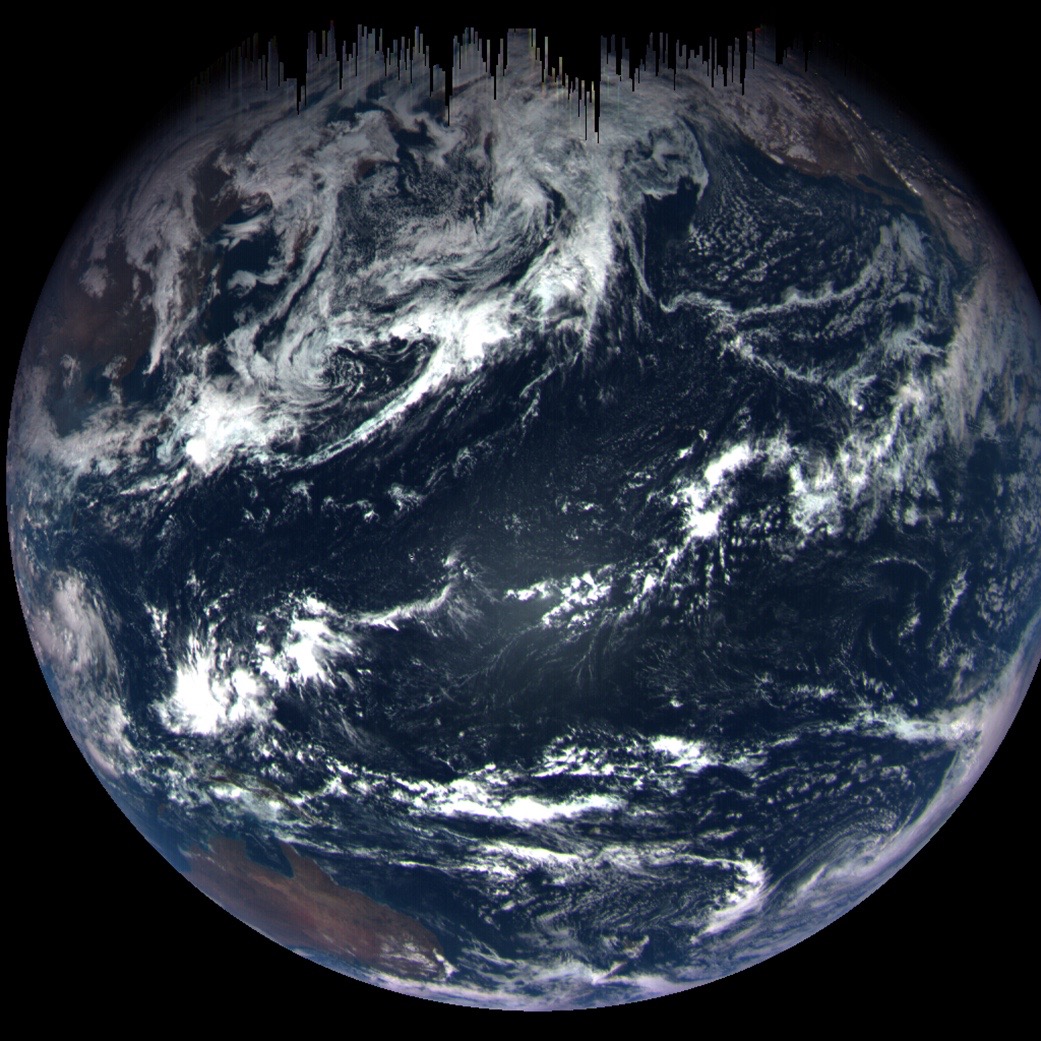Earth Shines in Flyby Photo Snapped by NASA Asteroid Probe

NASA's OSIRIS-REx spacecraft memorialized last week's brief swing by Earth with a nice photo of its home planet.
On Friday (Sept. 22), OSIRIS-REx zoomed 10,711 miles (17,237 kilometers) above Antarctica, acing a "gravity-assist" flyby designed to boost its speed and set its course toward a near-Earth asteroid called Bennu.
The probe took the newly released photo a few hours after that closest approach, when it was about 106,000 miles (170,000 km) from Earth, NASA officials said. [See more photos from the OSIRIS-REx Mission]
The view centers on the vast Pacific Ocean. Australia is at lower left, and the southwestern United States and Baja California are visible in the upper-right portion of the image. And don't worry: Rivers of tar are not oozing from the North Pole.
"The dark vertical streaks at the top of the image are caused by short exposure times (less than three milliseconds)," NASA officials wrote in an image description Tuesday (Sept. 26). "Short exposure times are required for imaging an object as bright as Earth, but are not anticipated for an object as dark as the asteroid Bennu, which the camera was designed to image."
The $800 million OSIRIS-REx mission — whose name is short for Origins, Spectral Interpretation, Resource Identification, Security-Regolith Explorer — launched on Sept. 8, 2016. If all goes according to plan, the spacecraft will arrive at the 1,640-foot-wide (500 meters) Bennu late next year.
OSIRIS-REx will study the rock from orbit for more than 18 months and then head in to snag a sample of dirt and gravel from Bennu's surface in July 2020. This material will parachute to Earth's surface inside a special return capsule in September 2023.
Breaking space news, the latest updates on rocket launches, skywatching events and more!
Scientists around the world will then analyze the sample, searching for clues about the solar system's early days and the role Bennu, and other asteroids like it, may have played in delivering life's building blocks to Earth.
Follow Mike Wall on Twitter @michaeldwall and Google+. Follow us @Spacedotcom, Facebook or Google+. Originally published on Space.com.

Michael Wall is a Senior Space Writer with Space.com and joined the team in 2010. He primarily covers exoplanets, spaceflight and military space, but has been known to dabble in the space art beat. His book about the search for alien life, "Out There," was published on Nov. 13, 2018. Before becoming a science writer, Michael worked as a herpetologist and wildlife biologist. He has a Ph.D. in evolutionary biology from the University of Sydney, Australia, a bachelor's degree from the University of Arizona, and a graduate certificate in science writing from the University of California, Santa Cruz. To find out what his latest project is, you can follow Michael on Twitter.
